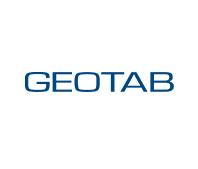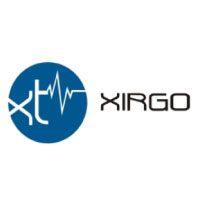
In the digital age, data has become the lifeblood of businesses, driving decision-making, strategy development, and overall growth. However, the process of data entry, while essential, often poses significant challenges and costs to organizations.
The good news is that with the advent of advanced workforce management tools, these hurdles can be overcome, leading to more efficient and cost-effective data entry processes. This blog post explores the key challenges and costs associated with data entry and delves into how innovative workforce management tools can help alleviate these issues.
The Challenges and Costs of Data Entry
- Human Error: Traditional manual data entry methods are prone to human errors, which can lead to inaccurate data, skewed reports, and ultimately, poor decision-making. These errors not only waste time and resources but also put the integrity of the data at risk.
- Inadequate Training: Insufficient training of employees responsible for data entry can result in errors and inconsistencies. Without proper guidance and knowledge of best practices, individuals may struggle to enter data accurately and efficiently, leading to data quality issues.
- Inconsistent Data Standards: Organizations often suffer when there are no standardized procedures for entering and formatting data. Managing data entry across various departments or locations can result in inefficiencies, as data might be entered multiple times, causing redundancy and confusion and impacting decision-making processes.
- Time-Consuming: Manual data entry is a time-consuming task that diverts valuable human resources away from more strategic and value-added activities. It can lead to reduced productivity and increased labor costs.
- Repetitiveness and Employee Dissatisfaction: The repetitive nature of data entry can lead to employee dissatisfaction, reduced morale, and even burnout. High turnover rates due to monotonous tasks can further escalate recruitment and training costs.
- Overextended Resources: Traditional data entry methods require substantial physical resources, including paper, printers, and storage space. This adds to the overall operational costs and environmental footprint.
- Greater Complexity: As an organization grows, the volume and complexity of data they need to manage also increases exponentially. Handling vast amounts of data, especially if it’s unstructured or comes from various sources, can overwhelm manual data entry processes, leading to errors and inefficiencies.
- Security Concerns: Organizations may hesitate to implement efficient data entry solutions due to concerns about data security. While these concerns are valid, they can lead to overly cautious and slow processes that hinder data entry efficiency.
- More Backlogs: Companies frequently accumulate data entry backlogs, especially during peak business periods. When there is a backlog, data entry staff can become overwhelmed, leading to rushed and error-prone work.
- Insufficient QC: Without robust data quality control measures in place, data entry errors can go unnoticed until they cause more significant problems downstream. Inadequate validation and verification processes can allow incorrect or incomplete data to enter the system, leading to issues down the line.
- Integration Challenges: Data entry challenges can also stem from difficulties integrating data from various sources and systems. Incompatibilities between different databases and software applications can complicate the data entry process and lead to errors.
- Outdated Technology: Outdated data entry systems and software can hinder a company’s ability to enter and manage data effectively. Legacy systems may lack the necessary features and integration capabilities to handle modern data needs, making them prone to data entry problems.
To address the above issues, organizations must invest in automation, provide proper training, establish data standards, and implement robust quality control measures. Only by tackling these challenges can companies ensure that their data entry processes are accurate, efficient, and capable of supporting informed decision-making in the modern business landscape.
Benefits of Workforce Management Tools
- Time Savings: By automating data entry processes, organizations can free up valuable human resources, allowing employees to focus on more strategic tasks that drive business growth. This leads to improved productivity and reduced labor costs.
- Resource Efficiency: By transitioning from paper-based to digital data entry, organizations can significantly reduce their reliance on physical resources. This not only cuts operational costs but also contributes to a more sustainable and environmentally-friendly business approach.
- Accuracy and Consistency: Workforce management tools equipped with automation and AI capabilities can significantly reduce human errors. These tools can validate and correct data entries in real-time, ensuring accuracy and consistency across the database.
- Integrated Solutions: Advanced workforce management tools often come with integration capabilities, allowing data to flow seamlessly between different departments and locations. This eliminates redundancy and ensures data consistency throughout the organization.
- Employee Satisfaction: With routine data entry tasks off their plates, employees can engage in more meaningful and intellectually stimulating work. This leads to higher job satisfaction, increased morale, and ultimately, reduced turnover rates.
The challenges and costs associated with manual data entry can be daunting, but the optimal workforce management tools can help any organization overcome these obstacles. By embracing these technologies and strategies, businesses can pave the way for a more streamlined and cost-effective data entry processes, ultimately unlocking new avenues for growth, success, and satisfaction!
Schedule a custom demo to see how TeamWherx® can help your construction firm digitize and automate workflows to help drive better productivity and performance.
Share this post:
About the author : Actsoft Team
Actsoft’s team of industry experts have their fingers on the business world’s pulse. It’s our mission to deliver the latest news to keep you and your leaders on top of the latest trends, further helping you to excel and exceed your goals.

















 Encore & Geotab Drive
Encore & Geotab Drive



























 Gain even greater insight into the daily activities of your fleet using the combination of Geotab and Actsoft. Geotab devices provide detailed data collection and seamless integration with our solutions; learn more about the ways your vehicles are being used daily with the power of this tandem.
Gain even greater insight into the daily activities of your fleet using the combination of Geotab and Actsoft. Geotab devices provide detailed data collection and seamless integration with our solutions; learn more about the ways your vehicles are being used daily with the power of this tandem.



 Actsoft partnered with Odin to provide our solutions overseas, through payment processing integrations. Odin helps us support user management for our software; customers can also purchase our products through Odin’s billing platform.
Actsoft partnered with Odin to provide our solutions overseas, through payment processing integrations. Odin helps us support user management for our software; customers can also purchase our products through Odin’s billing platform.

 VisTracks powers our Electronic Logging Device (ELD) solution, which enables transportation businesses to easily automate their hours of service logs, remain in governmental compliance, and reduce their potential to incur costly fines.
VisTracks powers our Electronic Logging Device (ELD) solution, which enables transportation businesses to easily automate their hours of service logs, remain in governmental compliance, and reduce their potential to incur costly fines. Integration between Actsoft solutions and BeWhere’s software products is available. Take your team’s asset tracking, cellular data connectivity, and field insight a step further with effective, cross-application compatibility.
Integration between Actsoft solutions and BeWhere’s software products is available. Take your team’s asset tracking, cellular data connectivity, and field insight a step further with effective, cross-application compatibility.
 CalAmp tracking devices for vehicles and assets alike are compatible with Actsoft solutions, making it easy for you to efficiently monitor your equipment and fleet cars. Help your team enhance accountability, safety, and savings through a combination of easily installed hardware and intuitive software.
CalAmp tracking devices for vehicles and assets alike are compatible with Actsoft solutions, making it easy for you to efficiently monitor your equipment and fleet cars. Help your team enhance accountability, safety, and savings through a combination of easily installed hardware and intuitive software. Our partnership with Uniden is ideal for companies looking to gain advanced diagnostics on their fleets. Uniden’s extensive product listing of car electronics like radios, dash cams, radar detectors, and in-vehicle communicators work in concert with Actsoft’s solutions to better connect your vehicles to the company headquarters.
Our partnership with Uniden is ideal for companies looking to gain advanced diagnostics on their fleets. Uniden’s extensive product listing of car electronics like radios, dash cams, radar detectors, and in-vehicle communicators work in concert with Actsoft’s solutions to better connect your vehicles to the company headquarters. Kyocera offers a wide range of mobile devices, ranging in design from traditional phones to ultra-durable handset technology. Actsoft is able to equip organizations in a variety of different industries with solutions for improved business, while Kyocera supplies the technology they can flawlessly operate on.
Kyocera offers a wide range of mobile devices, ranging in design from traditional phones to ultra-durable handset technology. Actsoft is able to equip organizations in a variety of different industries with solutions for improved business, while Kyocera supplies the technology they can flawlessly operate on.

 Our software is the perfect complement to Apple’s user-friendly technology. Equip your workforce with the devices and solutions it needs for optimized productivity during daily operations with Apple and Actsoft.
Our software is the perfect complement to Apple’s user-friendly technology. Equip your workforce with the devices and solutions it needs for optimized productivity during daily operations with Apple and Actsoft.
 Actsoft and Sanyo teamed up to merge intuitive business management software with the technology of today. This partnership allows us to provide you with all the tools your team needs for improved workflows, better coordination, and optimized productivity.
Actsoft and Sanyo teamed up to merge intuitive business management software with the technology of today. This partnership allows us to provide you with all the tools your team needs for improved workflows, better coordination, and optimized productivity. Motorola’s mobile technology works in tandem with our solutions to provide extra versatility to your business practices. Coupled with our software’s features, Motorola’s reliable devices make connecting your workforce simpler than ever to do.
Motorola’s mobile technology works in tandem with our solutions to provide extra versatility to your business practices. Coupled with our software’s features, Motorola’s reliable devices make connecting your workforce simpler than ever to do. We’re able to bundle certain solutions of ours (including our Electronic Visit Verification options) with Samsung devices to help your team achieve as much functionality as possible, while keeping rates affordable. Use these combinations for accurate recordkeeping, improved communication, and smarter data collection in the field.
We’re able to bundle certain solutions of ours (including our Electronic Visit Verification options) with Samsung devices to help your team achieve as much functionality as possible, while keeping rates affordable. Use these combinations for accurate recordkeeping, improved communication, and smarter data collection in the field.